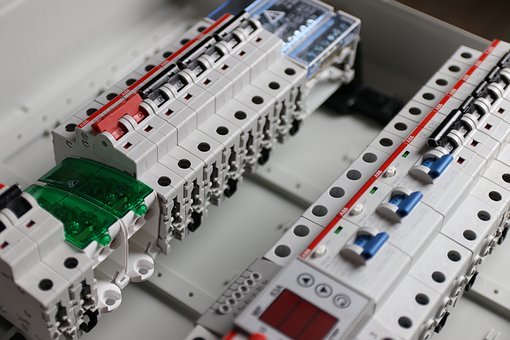CIRCUIT BREAKER MAIN FEATURES
2022-08-17
2020-03-19
The circuit breaker is a kind of basic low-voltage electrical appliance in electric system. It has the functions of overload, short circuit and undervoltage protection, and has the ability to protect circuit and power supply.
The features of electrical circuit breakers mainly include: rated operating voltage; rated current; tripping current setting range for overload protection and short circuit protection; rated short circuit breaking current (industrial circuit breaker Icu; household circuit breaker Icn).

This is the voltage at which the circuit breaker operates under normal (uninterrupted) conditions.
2. Rated Current (In)
This is the maximum current that the circuit breaker equipped with a special overcurrent trip relay can bear indefinitely at the ambient temperature specified by the manufacturer, and it will not exceed the temperature limit specified by the current bearing component.
3. Short-circuit Relay Trip Current Setting Value (Im)
The short-circuit trip relay (instantaneous or short delay) is used in circuit breaker trip when a high fault current value occurs.
4. Rated Short-circuit Breaking Capacity (Icu or Icn)
The rated short-circuit breaking current of the circuit breaker is the highest (expected) current value that the circuit breaker can break without being damaged. The current value provided in the standard is the root mean square value of the AC component of the fault current. The DC transient component (which always appears in the worst case short circuit) is assumed to be zero when calculating the standard value. Industrial circuit breaker ratings (Icu) and household circuit breaker ratings (Icn) are usually given in kA rms.
5. Short-circuit Breaking Capacity (Ics)
The rated breaking capacity of the circuit breaker is divided into two types: rated limit short-circuit breaking capacity and rated operating short-circuit breaking capacity.
The rated limit short-circuit breaking capacity (Icn) refers to that the low-voltage circuit breaker can operate normally again after breaking the maximum three-phase short-circuit current at the outgoing end of the circuit breaker and break this short-circuit current again. As for whether it can be connected and broken normally in the future, the circuit breaker does not guarantee. While the rated operation short-circuit breaking capacity (Ics) refers to that the circuit breaker can be normally opened multiple times when the maximum three-phase short-circuit current at its output end occurs.
Generally speaking, the circuit breaker with three protection functions of overload long delay, short-circuit short delay and short-circuit instantaneous can realize selective protection. It is used as the main protection distribution switch in most trunk lines (including the outgoing end of transformer). Circuit breakers without short-circuit short-time delay function (only overload long-time delay and short-circuit instantaneous two-stage protection) can not be used as selective protection, they can only be used in branch circuits.
No matter what kind of circuit breaker, it has two important technical indicators, i.e. Icu and Ics. However, as the circuit breaker used on the branch line, it can only meet the rated limit short-circuit breaking capacity. It is not necessary for the circuit breaker on the branch line to pursue its short-circuit breaking capacity index. For the circuit breaker used on the main line, it should not only meet the requirements of rated limit short-circuit breaking capacity, but also meet the requirements of rated operation short-circuit breaking capacity. If only rated limit short-circuit breaking capacity (Icu) is used to measure whether its breaking capacity is qualified, it will bring unsafe hidden danger to the user.




